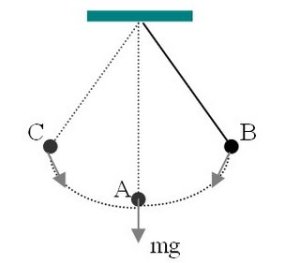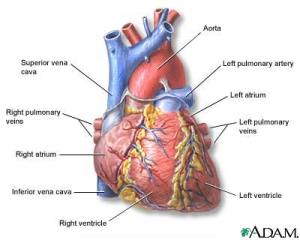Antivirus merupakan obat atau sebagai antisipasi dari serangan virus komputer supaya virus tersebut tidak menginfeksi komputer yang dapat berakibat fatal bagi komputer anda, pasti hal ini sangat menjengkelkan bagi kalian, karena data penting yang kalian miliki bisa hilang atau dihapus oleh virus, tapi hal ini hanya berlaku bagi kalian yang masih menggunakan OS Windows dan bukan Open Source seperti linux, namun bagi anda yang masih setia menggunakan OS windows maka diwajibkan untuk memakai antivirus yang tentunya bisa melindungi komputer anda dari serangan virus, trojan, worm, phising, dll. Berikut dibawah ini daftar Antivirus Buatan Indonesia yang paling banyak digunakan di Indonesia :
1. PC Media Antivirus
PCMAV adalah Antivirus yang dibuat oleh majalah PCmedia yang dimulai pada awal tahun 2006, antivirus ini merupakan antivirus yang paling banyak digunakan di Indonesia, mengingat kemampuannya yang sangat bagus dan sangat membantu sekali, terutama ketika komputer terinfeksi virus, kalian dapat menggunakan pcmav v4lkyr13 untuk membasmi virus/worm yang bernama win32 heur/ win32 cekar, karena antivirus yang cocok untuk menghapus virus/worm tersebut adalah pcmav. Kelemahannya hanya pada waktu scanning yang lama dan tidak bisa digunakan pada OS windows 98 harus windows 2000 keatas.
2. SMADAV
SMADAV adalah antivirus buatan Indonesia yang mulai diluncurkan pada bulan Maret 2007 dan mulai booming pada awal bulan tahun 2009, pengguna smadav pun semakin bertambah itu semua tidak terlepas oleh upaya smadav untuk memperbaharui antivirusnya, keunggulan antivirus ini adalah cepatnya proses scanning pada komputer dan tidak membebani memori komputer, selain itu smadav juga membersihkan hingga tuntas semua virus yang sudah menginfeksi komputer anda dan saat ini smadav mampu mendeteksi kurang lebih 1500 lokasi registry, dan kekurangannya belum bisa menghapus secara tuntas virus-virus impor, karena difokuskan untuk menghadapi virus yang tersebar di Indonesia.
3. ANSAV Antivirus
ANSAV adalah antivirus yang dibuat oleh perusahaan Indonesia yang mulai dipopulerkan sejak bulan Oktober 2006 dan merupakan pesaing dari Antivirus PCMAV yang terlebih dahulu telah diluncurkan. Antivirus ini juga cukup banyak digunakan oleh orang Indonesia terutama untuk membasmi virus brontok, antivirus ini mempunyai kelebihan yaitu sangat sensitif terhadap virus yang telah menginfeksi komputer namun sekaligus terdapat kekurangan yaitu kadang-kadang data yang sudah terinfeksi virus akan ikut terhapus bersama dengan virusnya.
4. Blue Atom Antivirus
Blue Atom Antivirus merupakan antivirus yang dibuat oleh anak kelas IX E SMP Katolik Stella Maris, Surabaya, yang bernama Alvin Leonardo yang masih berusia 14 Tahun, antivirus buatannya ini sudah mendapatkan garansi 100% Clean dari Softpedia.com pada tanggal 19 Oktober 2009, yang membuat kaget adalah Alvin ini tidak melakukan kursus atau bimbingan bahasa pemrograman untuk membuat antivirus ini, tapi dia belajar secara otodidak dengan mempelajari 3 bahasa pemrograman sekaligus yaitu Visual Basic, C#, dan Assembler (ASMX 86), dan menurut pakar IT yang juga Dekan FTIf ITS Prof Drs Ec Ir Riyanarto Sarno MSc PhD mengatakan bahwa Alvin ini akan diikutkan pada lomba-lomba pemrograman dan potensinya bisa dibina untuk menjadi Hacker ilmu putih (WhiteHat).
5. GUCUP Antivirus (GAV)
GUCUP Antivirus merupakan salah satu karya anak bangsa yang sudah dikenal Indonesia bahkan dunia Internasional, Antivirus ini dibuat oleh Yusuf Theretsa Patiku, mahasiswa Program Studi Teknik Informatika, Universitas Atma Jaya Yogyakarta. GAV ini dibuat dengan Microsoft Visual Studio .Net 2003 dengan bahasa pemrograman C#, Antivirus ini juga sudah mendapat garansi 100% clean dari Softpedia.com dan bisa langsung di download disana, kelebihan dari antivirus ini adalah mampu menscan file arsip seperti rar maupun zip, memory system scanning, proses scanning cepat, mampu memisahkan file document yang sudah terinfeksi malware (for : Backdoor.Win32.Delf.axz, Trojan.Win32.Delf.aav, Worm.Win32.Delf.cd) dan mampu memisahkan file aplikasi/.exe dari malware (for : DeulleDo-X [2], Virus.Win32.Delf.bk). Dan masih banyak lagi fitur menarik dari Antivirus ini.
6. AVIGEN Antivirus
AVIGEN Antivirus merupakan antivirus buatan Indonesia yang mempunyai website di www.vibi-bego.com kelebihan dari antivirus ini adalah bisa mencari file-file yang sudah terinfeksi virus seperti worm, hacktool, exploit script, serta trojan horse. Fasilitas yang terdapat pada AVIGEN adalah registry tweak, scan running proses, process viewer, scan autorun location dan masih banyak lagi. Selain itu Antivirus ini juga sudah mendapatkan sertifikat 100% clean dari softpedia.com
















